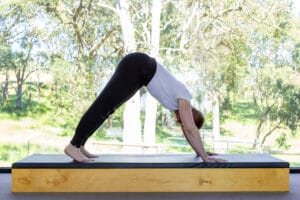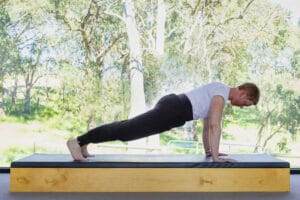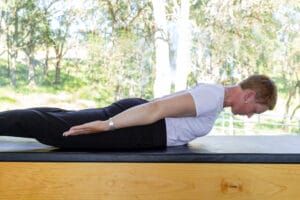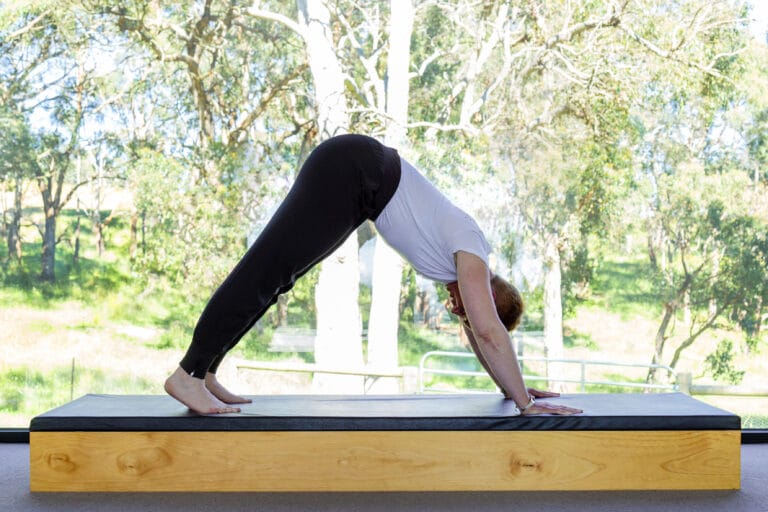Equestrians face no shortage of challenges in the quest to be their best. Professional Pilates instructor JESS MORRISON offers three exercises designed to strengthen and correct rider posture.
A rider must possess physical prowess, a sharp mind and a keen understanding of the movement of their horse. No other sport has at its centre a living, autonomous being!
This alone significantly increases the degree of difficulty for riders. The movement of the horse is bold and rhythmic and for it to be at its best, requires from the rider balance, suppleness, symmetry, strength, control, and awareness.
Horses, like their human counterparts, generally favour one side over another. Considered training can help address this in the horse, and when it comes to humans, the same is true. We too can train our bodies to be more even, aligned and posturally correct.
Humans have, over time, created patterns of movement in their bodies which are far from ideal. We engage in an ongoing and often relentless repetition of particular movement in our daily lives that can create patterns of habitual muscle recruitment. These need to be addressed. Furthermore, whether through injury, illness, or a predisposition, we can exhibit compensatory muscle recruitment patterns too, whereby a group of muscles which usually act together to ensure correct and efficient movement, do not. This too requires careful consideration, as these patterns when exhibited on the horse, can have a negative impact on its way of going.
The rider needs to understand and appreciate how their daily activities impact their body. This provides a great introspective starting point for their training off the horse. The rider also needs to be aware of how their body moves in various planes and ranges of motion. This requires a strong proprioceptive ability – the rider must develop a capacity to perceive their position in space, an element of fundamental importance in riding. Directing the rider’s thoughts to these areas will have a profound impact on their ability to dissect their flaws and identify areas that need more work and attention.
For some riders, there seems to be somewhat of a reluctance to engage in off-horse training, but just riding is not sufficient for your body if you want to get the best out of your horse and yourself. It will not equip you with all the tools you require to be the best rider you can be. Athletes from all sports cross train: swimmers embark on strength and conditioning regimes in the gym, football players do yoga to enhance their flexibility, and rowers spend hours on the bike to increase cardiovascular fitness, to name just a few.
The benefits of training your body away from your chosen sport have been well established. The ability to address areas of weakness in the rider via specific and relatable exercises produces an awareness that is then taken onto the horse, oftentimes delivering improvements extremely quickly.
I have been incredibly fortunate to have witnessed some exceptional changes in the riders I regularly work with. The movement patterns we establish in the studio and the exercises that we undertake, relate clearly and directly to riding – rounded shoulders which produce a slumped position in the torso can be retrained, lower backs that arch creating a hollow position can be remedied via pelvic and abdominal exercises, and riders who move their weight unnecessarily in the saddle can be taught how to recruit and engage their stabilising muscles to create a more seamless and stable position.
It all starts with developing a heightened sense of body awareness and training off the horse is a brilliant way to establish this. Training in the studio also helps to combat the compensatory and habitual muscle recruitment patterns mentioned above. A careful, trained set of eyes on you when executing specific exercises makes the world of difference.
In my studio, I teach riders about comprehensive body strengthening. I teach them how to better understand the movements of their body. I combine traditional Pilates exercises with pliability and balance work to help create a rider with heightened body awareness, greater core stability, comprehensive strength, agility, and symmetry. A rider that possesses these qualities is far better placed to deal with the rigours of riding than one without.
Below I have outlined three of my favourite rider exercises (there are so many others) to help the rider and, by extension, their horse.
The Pike to Front Support:

This exercise commences with mobilisation of the spine as the rider rolls down from an upright position to one where the hands hover above the floor. With the weight distributed through the balls of the feet the result is a lovely hamstring stretch. From there, with the shoulders positioned carefully away from the ears, the rider then walks their hands out to create the pike position (Image 1). A dropping of the heels will accentuate the stretch through the lower legs. After holding this correctly the rider can then continue to walk their hands out until they are positioned directly underneath the shoulders (Image 2).
On the walk out, the rider needs to create a feeling of lengthening through the back of the neck. The body becomes parallel to the floor without a dropping of the pelvis or an arching of the lower back, and there is a distinct feeling here of the rider trying to push the floor away from them, thereby creating a powerful position through the shoulder girdle. There must be a drawing of the tailbone underneath and a lifting of the abdominals up towards the spine, creating a sense of compression through the rider’s centre.
This is a wonderful exercise to develop abdominal strength, optimise shoulder girdle position and create a much needed stretching of the hamstrings. You should ensure that your form is held and the moment you feel you are compromising your position, you will need to come out of the exercise.
The Back Extension:

The rider needs to feel a lengthening through the back as they walk out of the Pike.
In this exercise, the rider lies prone with their feet positioned slightly wider than their hips and with the legs entirely relaxed. The arms are positioned gently by the side of the body. As the rider breathes in, the chest, arms and head are lifted from the mat as the rider concentrates on creating maximum elongation of their spine (Image 3). Simultaneously, the shoulder blades are brought in towards one another, increasing the space between the shoulders and the ears. Activation of the thoracic extensors is the key in this exercise, and if you are a rider who tends to have a rounded shoulder position this is definitely the exercise for you! You will need to do at least 10-12 repetitions.
Adductor Stretch with Rotation:

Creating maximum elongation of the spine in the Back Extension.
A wonderful way to open the hips, in this stretch the rider assumes a wide stance with the legs, with parallel feet and an upright starting position through the body. The initial part of the movement sees a roll down through the spine with the hands and arms heading towards the floor. It is important here that weight is directed through the front of the feet, to challenge balance and maximise the stretch. Once the upper body has lowered down and you have held this position for a minute or so, it is time to add the rotational component to the exercise. Take your right hand and place it on the lower part of your left leg, ensuring that there is no movement of the pelvis in the process. The left arm then reaches up high as you create a pivot of the torso (Image 4).

The Adductor Stretch with Rotation is a great way to open the hips.
You need to think here that it is the torso pivot which moves the arm rather than the arm moving independently (which will not give you the intended stretch and mobilisation). Hold the rotation for 10 seconds or so and then switch to the other side. Once you have done both sides, slowly roll up through your spine, until you are back where you started.
Horses are remarkable creatures who are highly amenable and mostly willing to accept all that we ask of them. They cannot, however, rise above the limitations of the rider. They can only be their best, if we are at our best. I often say to riders that if the horse is not performing at the level you are expecting, and all the usual considerations have been accounted for – saddle fit, teeth, feet, nutrition, veterinary and bodywork – then it might be time to seriously and carefully assess you, the rider. The impact you have on your horse must never be underestimated.
Happy riding!
Jess Morrison holds a Diploma of Professional Pilates Instruction. For more information, visit performance-pilates.com.au, email jess@performance-pilates.com.au, or call 0407 090 039.
Equestrian Hub VIP Members have the chance to win his month our VIP Members have the chance to WIN A month Training Zone subscription for Horse Riders with Performance Pilates valued $49. Become a VIP Member now to be in with the chance to win.
All images by Pia Johnson.



